All Resources
Read and get updated on how we progress
- All Resources
- Blog
- Customer Story

ERP Training and Development: Preparing Your Team for Success
Schedule MeetingIt is widely said, - "Even the finest tool remains worthless in untrained hands."
15-20% of ERP implementations fail due to lack of ERP training. No matter how good an ERP software is, if the users are unaware or untrained to use it then its implementation is likely to fail.
The textile industry comprises of many businesses that lack skilled employees to handle the advanced ERP software of their company. This may be due to lack of transitioning from traditional practices or a reluctance to transition from the legacy systems. In this blog we are going to understand the importance of ERP training and ERP team development, what value it brings and describe how an effective ERP training program should look like. Without further ado let’s get started!
Importance of ERP Training and Team Development
Textile ERP training and team development are necessary part of ERP success strategies. The textile industry is a traditional industry where many businesses have employees who are only educated with the traditional methods and not familiar with skills to use advanced ERP software. This makes it difficult for textile businesses to handle an ERP software efficiently.
To solve this, textile companies can invest in proper ERP training and development programs to educate their current workforce. By investing in quality training and development programs, textile companies can:
- Maximize ROI: Properly trained employees can make the most of the ERP software's modules. This ensures that the investment in the software translates into tangible advantages.
- Boost Productivity: Training helps employees become efficient in using the software. This leads to faster task completion and reduces chances of errors.

- Easy Employee Transitioning: Training reduces the stress associated with learning new systems and demonstrates the company's commitment to employee growth and success.
- Ensure Compliance and Standardization: Well-trained staff can adhere to standardized processes and compliance requirements, minimizing risks and enhancing consistency across the organization.
An Effective ERP Training Program

1. Needs Assessment
Before designing a training program, conduct a thorough needs assessment to identify the specific skills and knowledge gaps among your employees. This assessment should involve:
- Analyzing current workflows and processes: To identify areas that will be impacted by the ERP implementation.
- Surveying employees: To understand their current level of familiarity with ERP systems and any specific concerns they may have.
- Consulting with department heads and key stakeholders: To determine the critical functions and features of the ERP system that require focused training.
2. Customized Training Plans
Once the needs assessment is complete, develop customized training plans tailored to different user groups within your organization. These plans should address the unique requirements of each department and roles such as:
- Executives and Managers: Focus on high-level features such as data analytics, reporting, and strategic decision-making tools.
- Operational Staff: Emphasize day-to-day functionalities like inventory management, order processing, and production planning.
- Technical Team: Provide in-depth training on system configuration, troubleshooting, and maintenance.
3. Combined Learning Approach
Adopt a blended learning approach that combines various training methods to cater to different learning styles and preferences. This approach can include:
- Instructor-Led Training (ILT): Classroom sessions or virtual workshops led by experienced trainers to provide hands-on experience and real-time interaction.
- E-Learning Resources: Online courses and tutorials that allow employees to learn at their own pace and revisit topics as needed.
- On-the-Job Training: Practical, real-world training where employees can apply their knowledge under the guidance of a mentor or supervisor.
- Interactive Simulations: Simulated environments that mimic the ERP system's interface, allowing employees to practice without the risk of impacting live data.
4. Performance Monitoring and Feedback
Track the progress and performance of your training program by collecting feedback from participants and monitoring key performance indicators (KPIs). This can include:
- Pre- and Post-Training Assessments: Evaluate employees' knowledge and skills before and after training to measure improvement.
- Surveys and Feedback Forms: Gather input from trainees to identify areas for improvement and ensure the training meets their needs.
- Performance Metrics: Monitor KPIs such as system usage rates, error rates, and productivity levels to assess the impact of the training on overall performance.
5. Continuous Learning and Support
Training should not be a one-time event. To ensure long-term success, establish a culture of continuous learning and support by implementing:
- Refresher Training: Regularly scheduled training sessions to reinforce key concepts and introduce new features or updates.
- Knowledge Sharing: Encourage employees to share their experiences and tips through forums, discussion groups, or internal newsletters.
- Help Desk and Support: Provide ongoing access to technical support and troubleshooting resources to address any issues that arise post-implementation.
Successful ERP implementation in the textile industry depends heavily on effective textile ERP training and team development. Proper training ensures that employees can fully utilize the ERP system, maximizing ROI, boosting productivity, and ensuring compliance. By conducting a needs assessment, creating customized training plans, using a blended learning approach, monitoring performance, and fostering continuous learning, textile companies can overcome the challenges of transitioning from traditional methods to modern ERP systems. Investing in ERP training not only empowers employees but also drives the overall success of the business.

ERP Software for Managing Raw Material Requirements for Technical Textiles
Book a MeetingCustomer Profile:
Our customer is a leading technical textiles manufacturer with a widespread presence across multiple countries. They specialize in producing innovative and high-performance textile solutions for various industries, including automotive, medical, and construction. Renowned for their cutting-edge products, they are committed to excellence and continuous improvement.
Problem Statement:
The customer was struggling with managing raw material requirements effectively, leading to inefficiencies in production planning and inventory management. Inconsistent material supply and inaccurate demand forecasting caused delays, increased costs, and occasional stockouts, impacting their ability to meet customer demands. The complexity of producing technical textiles, with their specialized materials and stringent quality requirements, further exacerbated these issues.
Solution:
To overcome these challenges, they implemented iTexClouds ERP software, which addressed their needs by:
- Integrating all material requirements planning into a single platform.
- Providing real-time visibility into inventory levels and material usage.
- Enhancing demand forecasting accuracy with advanced analytics.
- Automating purchase orders and supplier communications.
- Tracking material quality and compliance with industry standards.
- Optimizing production schedules based on material availability.
Results:
iTexClouds ERP software successfully helped the technical textile manufacturer:
- Achieve a 15-30% reduction in material waste due to improved planning and inventory management.
- Increased on-time delivery rates by 20%, ensuring customer satisfaction.
- Reduced production delays by 25% through better coordination and real-time data access.
- Lowered inventory holding costs by 15% with precise demand forecasting.
- Enhanced material quality control, resulting in a 10% decrease in product defects.
- Streamlined procurement processes, leading to a 20% increase in supplier collaboration.
Contact Us
So, what are you waiting for? Don't let your competition get ahead of you. Contact us today to discuss your textile ERP needs and let us help you achieve your business goals!
html,body{ margin: 0px; } #crmWebToEntityForm.zcwf_lblLeft { width:100%; padding: 25px; margin: 0 auto; box-sizing: border-box; } #crmWebToEntityForm.zcwf_lblLeft * { box-sizing: border-box; } #crmWebToEntityForm{text-align: left;} #crmWebToEntityForm * { direction: ltr; } .form-row { display: flex; flex-wrap: wrap; } .form-field { flex: 0 0 50%; max-width: 50%; } .zcwf_lblLeft .zcwf_title { word-wrap: break-word; padding: 0px 6px 10px; font-weight: bold; } .zcwf_lblLeft .zcwf_col_fld input[type=text], .zcwf_lblLeft .zcwf_col_fld textarea { width: 100%; border: 1px solid #ccc !important; resize: vertical; border-radius: 2px; float: left; } .zcwf_lblLeft .zcwf_col_lab { width: 30%; word-break: break-word; padding: 0px 6px 0px; margin-right: 10px; margin-top: 5px; float: left; min-height: 1px; } .zcwf_lblLeft .zcwf_col_fld { float: left; width: 100%; padding: 0px 6px 0px; position: relative; margin-top: 5px; } .zcwf_lblLeft .zcwf_privacy{padding: 6px;} .zcwf_lblLeft .wfrm_fld_dpNn{display: none;} .dIB{display: inline-block;} .zcwf_lblLeft .zcwf_col_fld_slt { width: 60%; border: 1px solid #ccc; background: #fff; border-radius: 4px; font-size: 12px; float: left; resize: vertical; padding: 2px 5px; } .zcwf_lblLeft .zcwf_row:after, .zcwf_lblLeft .zcwf_col_fld:after { content: ''; display: table; clear: both; } .zcwf_lblLeft .zcwf_col_help { float: left; margin-left: 7px; font-size: 12px; max-width: 35%; word-break: break-word; } .zcwf_lblLeft .zcwf_help_icon { cursor: pointer; width: 16px; height: 16px; display: inline-block; background: #fff; border: 1px solid #ccc; color: #ccc; text-align: center; font-size: 11px; line-height: 16px; font-weight: bold; border-radius: 50%; } .zcwf_lblLeft .zcwf_row {/*margin: 15px 0px;*/} .zcwf_lblLeft .formsubmit { margin-right: 5px; cursor: pointer; color: #333; font-size: 12px; } .zcwf_lblLeft .zcwf_privacy_txt { width: 90%; color: rgb(0, 0, 0); font-size: 12px; font-family: Arial; display: inline-block; vertical-align: top; color: #333; padding-top: 2px; margin-left: 6px; } .zcwf_lblLeft .zcwf_button { font-size: 17px; color: #ffffff; /*border: 1px solid #ccc;*/ padding: 13px 20px; border-radius: 4px; cursor: pointer; max-width: 120px; overflow: hidden; text-overflow: ellipsis; white-space: nowrap; margin-bottom: 6px; } .zcwf_lblLeft .zcwf_tooltip_over{ position: relative; } .zcwf_lblLeft .zcwf_tooltip_ctn{ position: absolute; background: #dedede; padding: 3px 6px; top: 3px; border-radius: 4px;word-break: break-word; min-width: 100px; max-width: 150px; color: #333; z-index: 100; } .zcwf_lblLeft .zcwf_ckbox{ float: left; } .zcwf_lblLeft .zcwf_file{ width: 55%; box-sizing: border-box; float: left; } .clearB:after{ content:''; display: block; clear: both; } @media all and (max-width: 600px) { .zcwf_lblLeft .zcwf_col_lab, .zcwf_lblLeft .zcwf_col_fld { width: auto; float: none !important; } .zcwf_lblLeft .zcwf_col_help {width: 40%;} } -None- Advertisement Cold Call Employee Referral External Referral Website Partner Public Relations Sales Mail Alias Seminar Partner Seminar-Internal Trade Show Web Download Web Research Chat Tex EventCaptcha validation failed. If you are not a robot then please try again.

Reducing Downtime with ERP Predictive Maintenance
Book a MeetingCustomer Profile:
Customer is a renowned textile manufacturer known for producing high-quality yarn and fabrics. With multiple spinning mills, the company has been a key player in the textile industry, supplying products to global markets. They are dedicated to maintaining high standards of production efficiency and product quality.
Problem Statement:
The customer faced significant challenges due to unforeseen machine downtime, which disrupted production schedules and increased operational costs. The lack of predictive maintenance resulted in frequent machine breakdowns, leading to delays, decreased productivity, and higher maintenance expenses. Additionally, inconsistent machine performance impacted the quality of the final products, causing customer dissatisfaction.
Solution:
To address these issues, the customer needed a robust system to establish predictive maintenance and enhance overall operational efficiency. They turned to iTexClouds ERP software, which solved these problems by:
- Implementing real-time monitoring of machine performance and health.
- Utilizing ERP predictive maintenance to forecast potential machine failures.
- Automating maintenance schedules based on data analytics.
- Integrating maintenance records and alerts into the ERP system.
- Providing actionable insights through comprehensive reports and dashboards.
- Enhancing communication between maintenance and production teams.
Results:
By leveraging ERP predictive maintenance with iTexClouds, the textile manufacturer successfully:
- Reduced machine downtime by 40% through ERP predictive maintenance.
- Increased overall production efficiency by 25-30%.
- Lowered maintenance costs by 30% due to timely interventions.
- Improved product quality consistency, resulting in a 15% decrease in customer complaints.
- Enhanced decision-making with real-time data and analytics.
- Streamlined maintenance processes, leading to a 20% increase in team productivity.
Contact Us
So, what are you waiting for? Don't let your competition get ahead of you. Contact us today to discuss your textile ERP needs and let us help you achieve your business goals!
html,body{ margin: 0px; } #crmWebToEntityForm.zcwf_lblLeft { width:100%; padding: 25px; margin: 0 auto; box-sizing: border-box; } #crmWebToEntityForm.zcwf_lblLeft * { box-sizing: border-box; } #crmWebToEntityForm{text-align: left;} #crmWebToEntityForm * { direction: ltr; } .form-row { display: flex; flex-wrap: wrap; } .form-field { flex: 0 0 50%; max-width: 50%; } .zcwf_lblLeft .zcwf_title { word-wrap: break-word; padding: 0px 6px 10px; font-weight: bold; } .zcwf_lblLeft .zcwf_col_fld input[type=text], .zcwf_lblLeft .zcwf_col_fld textarea { width: 100%; border: 1px solid #ccc !important; resize: vertical; border-radius: 2px; float: left; } .zcwf_lblLeft .zcwf_col_lab { width: 30%; word-break: break-word; padding: 0px 6px 0px; margin-right: 10px; margin-top: 5px; float: left; min-height: 1px; } .zcwf_lblLeft .zcwf_col_fld { float: left; width: 100%; padding: 0px 6px 0px; position: relative; margin-top: 5px; } .zcwf_lblLeft .zcwf_privacy{padding: 6px;} .zcwf_lblLeft .wfrm_fld_dpNn{display: none;} .dIB{display: inline-block;} .zcwf_lblLeft .zcwf_col_fld_slt { width: 60%; border: 1px solid #ccc; background: #fff; border-radius: 4px; font-size: 12px; float: left; resize: vertical; padding: 2px 5px; } .zcwf_lblLeft .zcwf_row:after, .zcwf_lblLeft .zcwf_col_fld:after { content: ''; display: table; clear: both; } .zcwf_lblLeft .zcwf_col_help { float: left; margin-left: 7px; font-size: 12px; max-width: 35%; word-break: break-word; } .zcwf_lblLeft .zcwf_help_icon { cursor: pointer; width: 16px; height: 16px; display: inline-block; background: #fff; border: 1px solid #ccc; color: #ccc; text-align: center; font-size: 11px; line-height: 16px; font-weight: bold; border-radius: 50%; } .zcwf_lblLeft .zcwf_row {/*margin: 15px 0px;*/} .zcwf_lblLeft .formsubmit { margin-right: 5px; cursor: pointer; color: #333; font-size: 12px; } .zcwf_lblLeft .zcwf_privacy_txt { width: 90%; color: rgb(0, 0, 0); font-size: 12px; font-family: Arial; display: inline-block; vertical-align: top; color: #333; padding-top: 2px; margin-left: 6px; } .zcwf_lblLeft .zcwf_button { font-size: 17px; color: #ffffff; /*border: 1px solid #ccc;*/ padding: 13px 20px; border-radius: 4px; cursor: pointer; max-width: 120px; overflow: hidden; text-overflow: ellipsis; white-space: nowrap; margin-bottom: 6px; } .zcwf_lblLeft .zcwf_tooltip_over{ position: relative; } .zcwf_lblLeft .zcwf_tooltip_ctn{ position: absolute; background: #dedede; padding: 3px 6px; top: 3px; border-radius: 4px;word-break: break-word; min-width: 100px; max-width: 150px; color: #333; z-index: 100; } .zcwf_lblLeft .zcwf_ckbox{ float: left; } .zcwf_lblLeft .zcwf_file{ width: 55%; box-sizing: border-box; float: left; } .clearB:after{ content:''; display: block; clear: both; } @media all and (max-width: 600px) { .zcwf_lblLeft .zcwf_col_lab, .zcwf_lblLeft .zcwf_col_fld { width: auto; float: none !important; } .zcwf_lblLeft .zcwf_col_help {width: 40%;} } -None- Advertisement Cold Call Employee Referral External Referral Website Partner Public Relations Sales Mail Alias Seminar Partner Seminar-Internal Trade Show Web Download Web Research Chat Tex EventCaptcha validation failed. If you are not a robot then please try again.

5 ERP Cost Reduction Strategies in the Textile Industry
Schedule MeetingDid you know that 46% of businesses believe that cost savings are among the top three goals for ERP?
Cost reduction is key for maintaining a profitable and sustainable textile business. Integrating ERP software into your business processes will significantly aid in this regard. ERP systems encompass various modules such as inventory management, quality management, financial accounting etc., which collectively enable effective cost control, improve liquidity, and enhance financial stability amid market fluctuations.
In this blog, we will explore the need of ERP cost reduction strategies in the textile industry and how ERP software can help achieve these goals.
Need for ERP Cost Reduction Strategies
If you are planning to optimize your capital utilizations to increase overall efficiency, then implementing ERP cost reduction strategies is the smart way to go. It will help you utilize your costs effectively and reduce any excess or unnecessary wastage of resources.
Let us look at the areas of a textile business that highlight the importance of implementing such strategies:

Better Inventory Management:
In the textile industry, inventory management ensures that resources are properly used, and inventory maintenance is done efficiently. This, in turn, reduces wastage of resources and capital.
ERP software provides enhanced inventory management by maintaining optimal inventory levels, preventing both overstocking and understocking. This balance helps in reducing storage costs and ensuring that capital is not tied up in excess inventory.
Improved Quality Control:
Quality control in the textile industry is essential for preventing defects in final products, which can lead to significant financial losses and damage to a brand's reputation.
ERP software includes a quality control module that is designed to detect errors in products, rectify them immediately, and reduce material waste. This not only saves money but also increases customer satisfaction and loyalty by ensuring that only high-quality products reach the market.
Financial Management:
Effective financial management in the textile industry is crucial for identifying available cost-saving opportunities and maintaining a proper budget. With better financial management, textile businesses can make informed decisions that enhance profitability in the long run.
ERP software includes a financial accounting module that specializes in tracking costs and revenues accurately, ensuring precise product costing and pricing. This module also facilitates budget control, helping businesses avoid overspending and identify areas for cost reduction.
Labor Cost Management:
Labor cost management plays an important role in the textile industry as it helps manufacturers efficiently allocate their workforce and manage payroll. ERP software automates repetitive tasks such as order entry and processing, stock reordering and replenishment, and financial reporting/analysis.
This automation reduces the involvement of manual labor in these tasks, saving the costs associated with it. Additionally, it allows the workforce to focus on more strategic activities that add value to the business.
Sustainable Energy Management:
Sustainability is becoming increasingly important in the textile industry, not only for environmental reasons but also for cost savings. ERP software can help monitor and manage energy consumption, leading to reduced energy costs.
Implementing ESG (Environmental, Social, and Governance) principles and practices through ERP software acts as a cost reduction strategy by minimizing waste and improving a company's environmental footprint. This contributes to long-term cost savings and enhances the company's reputation, making it more attractive to environmentally conscious consumers and investors.
5 Common ERP Cost Reduction Strategies in the Textile Industry
Implementing ERP software in the textile industry offers various strategies for cost reduction. Here are some of the most effective ERP Cost Reduction Strategies:
1] Inventory cost management: ERP software helps manufacturers implement inventory cost management strategies to lower carrying costs. By calculating the one-time cost and annual carrying cost savings using values such as current inventory value, current inventory turns, and target inventory turns, ERP software helps in managing inventory efficiently. This ensures that excess inventory is minimized, reducing storage costs and freeing up capital for other uses.

2] Optimized Resource Utilization: ERP software implements optimized resource utilization strategy to execute better scheduling and resource allocation. The software provides a production planning module which allows manufacturers to minimize downtime and improve machine utilization. This ensures that resources are used efficiently, reducing operational costs by maximizing the productivity of both machinery and labor.
3] Supply Chain Optimization: ERP software provides supply chain optimization strategies to offer real-time visibility into the textile production supply chain. This allows manufacturers to track shipments, manage vendors, and optimize logistics, thereby reducing lead times, transportation costs, and the risk of supply chain disruptions. Enhanced visibility and coordination result in a more efficient and cost-effective supply chain.
4] Accurate Costing and Pricing: ERP software implements accurate costing and pricing strategies to ensure detailed tracking of costs and revenues, leading to precise product costing. By analyzing elements like cost allocations, profit margins, and cost wastage, the software helps set competitive prices for products while maintaining profitability. This enables businesses to identify areas where cost reductions can be made without compromising quality.
5] Real-Time Data and Analytics: ERP software utilizes real-time data and analytics to promote informed decision-making. By integrating data from inventory, production, financial, human resources, and maintenance operations, the software provides insights into key performance indicators (KPIs). This helps textile companies identify cost-saving opportunities and monitor performance, ensuring that operations are continuously optimized for cost efficiency.
Implementing ERP cost reduction strategies in the textile industry is essential for reducing costs and improving ERP efficiency. ERP software helps manage inventory better, control quality, and manage finances effectively. They also reduce labor costs and promote sustainable energy practices.
With real-time data and analytics, ERP software helps make informed decisions. By using these strategies, textile manufacturers can cut waste and save money. Adopting ERP software ensures that the textile business remains profitable and sustainable in the long run.

7 Ways Textile Technology Solutions are Transforming the Industry
Schedule MeetingThe textile industry is one of the oldest manufacturing industries relying heavily on manual labor and traditional methods. However, over the past 50-60 years, the industry has witnessed drastic changes in terms of adopting advanced technologies. From CAD-CAM to textile ERP systems, and now depending on AI-driven software – the industry has indeed come a long way!
Gone are the days when textile production relied solely on human effort and rudimentary machinery. In this blog, we will explore 7 remarkable ways in which textile technology solutions are reshaping the industry. Be it design, production, quality control, supply chain management – advancing tech is benefiting every aspect of the industry.
That’s not all! Leveraging these technologies, manufacturers are able to achieve higher precision, reduce waste, stay up to date with market trends and promote environmentally friendly practices.
7 Ways Textile Technology Solutions are Transforming the Industry
Here are seven remarkable ways textile technology solutions are transforming the industry by driving efficiency, sustainability, and innovation across every aspect of textile manufacturing:

1] Increased Production Efficiency
Thanks to textile technology solutions, manufacturers have been able to increase their production efficiency manifold. Advanced machinery and automation systems like automated looms, sewing machines, cutting equipment, defect detectors, etc., have significantly streamlined production processes. These machines operate with greater speed than humans and ensure higher precision. This leads to reduced production times and increased output.
As a result, manufacturers are able to:
- Reduce textile waste
- Meet fast-changing customer demands
- Ensure consistent product quality
- Increase cost savings and profit margins
2] Enhanced Customization
With changing times, consumers are more inclined towards investing in customized products. It is reported that 74% of customers are willing to pay more if they get personalized products. To keep up with this textile manufacturing trend, business owners depend on several digital printing and design software systems that aid in manufacturing custom textiles. These technologies enable designers to produce intricate patterns and designs directly onto fabric without the need for traditional screens or dyes.
As a result, manufacturers can:
- Offer personalized clothing, home textiles, and accessories
- Cater to individual tastes and trends
- Stand out in a competitive market with unique products
- Respond quickly to custom orders and limited-edition collections
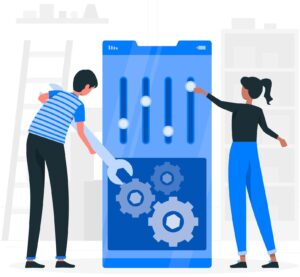

3] Improved Quality Control
For a long time, the textile industry depended on manual labor for detecting quality issues. Now, with integration of Artificial Intelligence (AI) and Internet of Things (IoT), quality control in textile manufacturing has become much simpler. AI-powered textile ERP systems monitor production processes in real-time, while IoT-enabled devices collect and analyze data, ensuring consistent product quality and minimizing defects.
As a result, manufacturers can:
- Detect and correct defects in real-time
- Maintain high standards of quality throughout the production process
- Reduce the likelihood of costly recalls and returns
- Enhance overall product reliability and customer satisfaction
4] Sustainable Practices and Recycling
Sustainability and ESG adherence are soon becoming mandatory on a global scale. Even consumers are increasingly falling in favor of healthy environmental practices, with almost 84% saying they might give up on a brand if it doesn’t follow ESG practices. Technological advancements have made it easier for textile business owners to keep up with sustainable practices. Innovative recycling techniques convert old textiles into new products, reducing waste and conserving resources. Mechanical and chemical recycling methods break down fabrics into fibers or raw materials for reuse.
As a result, manufacturers can:
- Implement closed-loop systems for continual garment repurposing
- Reduce environmental impact through sustainable manufacturing practices
- Conserve natural resources by recycling and upcycling textiles
- Meet consumer demand for eco-friendly products

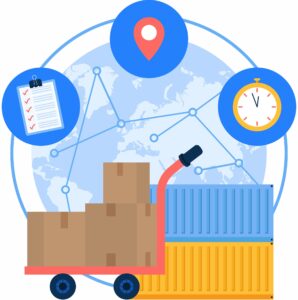
5] Better Supply Chain Management
Textile manufacturers deal with a vast supply chain daily, making it difficult for them to track and monitor everything. Moreover, the interdependence of each department necessitates maintaining a smooth supply chain. Textile technology solutions act like a boon, greatly enhancing transparency and traceability in the supply chain. Integration of textile ERP systems and IoT help manufacturers track raw materials from their origin through every stage of production to the final product.
As a result, manufacturers can:
- Improve overall supply chain efficiency and customer satisfaction
- Ensure ethical practices and maintain quality standards
- Optimize inventory management, reducing excess stock and waste
- Respond quickly to market demands and reduce lead times
6] Data-Driven Decision Making
Up to date data plays a crucial role in efficient decision making for a textile business. Back when the textile industry largely depended on manual methods for data collection, it led to delays and errors in data which often impacted business decisions. AI-powered textile ERP systems have solved this problem. Business owners now get access to readymade reports in single dashboards that allow easy analytics and facilitate data-driven decision making. By collecting and analyzing vast amounts of data, manufacturers can gain valuable insights into process efficiency, quality control, and consumer preferences.
As a result, manufacturers can:
- Identify patterns and trends to inform production schedules and inventory management
- Implement predictive maintenance strategies to prevent equipment failures
- Align production with market needs through demand forecasting
- Make informed decisions that drive business growth and cost savings


7] Faster Time-to-Market
When all aspects of the textile manufacturing business are aligned well, and things move smoothly from one department to another – it makes it easier for manufacturers to reduce their overall turn-around-time (TAT). Businesses have recorded improving their delivery timelines by 20-30% with the help of textile ERP systems. In addition, technologies like 3D printing and digital sampling enable rapid concept creation and testing, allowing manufacturers to respond swiftly to emerging textile manufacturing trends.
As a result, manufacturers can:
- Quickly create and test new designs without traditional prototypes
- Implement just-in-time production for efficient manufacturing and prompt delivery
- Bring new products to market faster, gaining a competitive advantage
- Enhance customer satisfaction with timely product launches and innovation
The future of the textile industry is bright, thanks to continuous advancements in technological solutions that are driving innovation and efficiency. With the integration of sophisticated textile ERP systems, AI-powered analytics, and cloud-based platforms, manufacturers can look forward to a future where operations are more streamlined, sustainable, and responsive to market demands.
As textile technology solutions become more intelligent and interconnected, the industry will see even greater improvements in customization, quality control, and supply chain management. Ultimately, these advancements will empower manufacturers to meet evolving consumer expectations, reduce environmental impact, and maintain a competitive edge in the global market.
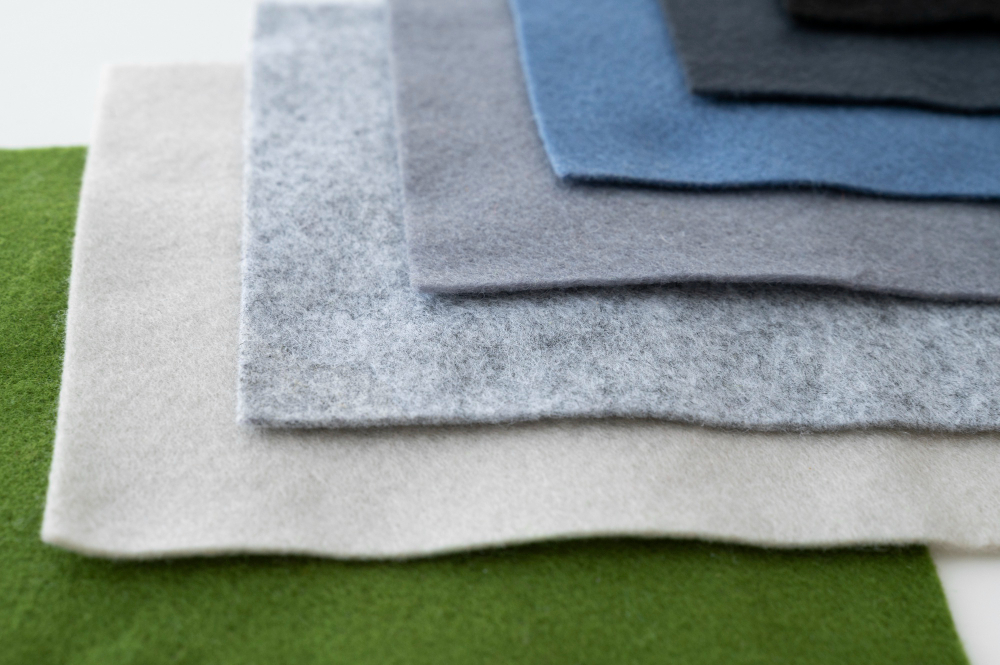
ERP Improving Efficiency in Non-Woven Fabric Blending Processes
Book a MeetingCustomer Profile:
Our customer is a leading non-woven fabric manufacturer that distributes high-quality fabrics to various well-known healthcare, home furnishings, and apparel companies. They are recognized for their innovative blending processes and commitment to delivering superior products to their diverse clientele.
Problem Statement:
The customer faced several challenges in their non-woven fabric blending processes. These issues highlighted the need for an integrated solution to enhance blending efficiency and maintain high product standards.
Some of these issues included:
- Inconsistent blending quality, leading to variations in fabric properties.
- Inefficient use of raw materials, resulting in increased costs.
- Difficulty in tracking and managing blend compositions.
- Delays in production schedules due to manual processes.
Solution:
The customer implemented iTexClouds textile ERP, focusing on improving non-woven fabric blending processes. Our software helped the customer:
- Automate blending recipes to ensure consistent fabric quality.
- Track and manage blend compositions in real-time.
- Efficiently use raw materials through precise measurement and allocation.
- Streamline production schedules with automated workflow management.
- Monitor blending performance and identify areas for improvement through comprehensive reporting and analytics.
Results:
The successful ERP implementation led to significant improvements in non-woven fabric blending processes, including:
- Blending quality consistency improved by 25%, ensuring uniform fabric properties.
- Raw material usage efficiency increased by 20%, reducing overall costs.
- Production schedules optimized, resulting in a 15% reduction in lead times.
- Enhanced tracking and management of blend compositions, leading to better quality control.
- Overall operational efficiency improved by 30%, boosting productivity and profitability.
Contact Us
So, what are you waiting for? Don't let your competition get ahead of you. Contact us today to discuss your textile ERP needs and let us help you achieve your business goals!
html,body{ margin: 0px; } #crmWebToEntityForm.zcwf_lblLeft { width:100%; padding: 25px; margin: 0 auto; box-sizing: border-box; } #crmWebToEntityForm.zcwf_lblLeft * { box-sizing: border-box; } #crmWebToEntityForm{text-align: left;} #crmWebToEntityForm * { direction: ltr; } .form-row { display: flex; flex-wrap: wrap; } .form-field { flex: 0 0 50%; max-width: 50%; } .zcwf_lblLeft .zcwf_title { word-wrap: break-word; padding: 0px 6px 10px; font-weight: bold; } .zcwf_lblLeft .zcwf_col_fld input[type=text], .zcwf_lblLeft .zcwf_col_fld textarea { width: 100%; border: 1px solid #ccc !important; resize: vertical; border-radius: 2px; float: left; } .zcwf_lblLeft .zcwf_col_lab { width: 30%; word-break: break-word; padding: 0px 6px 0px; margin-right: 10px; margin-top: 5px; float: left; min-height: 1px; } .zcwf_lblLeft .zcwf_col_fld { float: left; width: 100%; padding: 0px 6px 0px; position: relative; margin-top: 5px; } .zcwf_lblLeft .zcwf_privacy{padding: 6px;} .zcwf_lblLeft .wfrm_fld_dpNn{display: none;} .dIB{display: inline-block;} .zcwf_lblLeft .zcwf_col_fld_slt { width: 60%; border: 1px solid #ccc; background: #fff; border-radius: 4px; font-size: 12px; float: left; resize: vertical; padding: 2px 5px; } .zcwf_lblLeft .zcwf_row:after, .zcwf_lblLeft .zcwf_col_fld:after { content: ''; display: table; clear: both; } .zcwf_lblLeft .zcwf_col_help { float: left; margin-left: 7px; font-size: 12px; max-width: 35%; word-break: break-word; } .zcwf_lblLeft .zcwf_help_icon { cursor: pointer; width: 16px; height: 16px; display: inline-block; background: #fff; border: 1px solid #ccc; color: #ccc; text-align: center; font-size: 11px; line-height: 16px; font-weight: bold; border-radius: 50%; } .zcwf_lblLeft .zcwf_row {/*margin: 15px 0px;*/} .zcwf_lblLeft .formsubmit { margin-right: 5px; cursor: pointer; color: #333; font-size: 12px; } .zcwf_lblLeft .zcwf_privacy_txt { width: 90%; color: rgb(0, 0, 0); font-size: 12px; font-family: Arial; display: inline-block; vertical-align: top; color: #333; padding-top: 2px; margin-left: 6px; } .zcwf_lblLeft .zcwf_button { font-size: 17px; color: #ffffff; /*border: 1px solid #ccc;*/ padding: 13px 20px; border-radius: 4px; cursor: pointer; max-width: 120px; overflow: hidden; text-overflow: ellipsis; white-space: nowrap; margin-bottom: 6px; } .zcwf_lblLeft .zcwf_tooltip_over{ position: relative; } .zcwf_lblLeft .zcwf_tooltip_ctn{ position: absolute; background: #dedede; padding: 3px 6px; top: 3px; border-radius: 4px;word-break: break-word; min-width: 100px; max-width: 150px; color: #333; z-index: 100; } .zcwf_lblLeft .zcwf_ckbox{ float: left; } .zcwf_lblLeft .zcwf_file{ width: 55%; box-sizing: border-box; float: left; } .clearB:after{ content:''; display: block; clear: both; } @media all and (max-width: 600px) { .zcwf_lblLeft .zcwf_col_lab, .zcwf_lblLeft .zcwf_col_fld { width: auto; float: none !important; } .zcwf_lblLeft .zcwf_col_help {width: 40%;} } -None- Advertisement Cold Call Employee Referral External Referral Website Partner Public Relations Sales Mail Alias Seminar Partner Seminar-Internal Trade Show Web Download Web Research Chat Tex EventCaptcha validation failed. If you are not a robot then please try again.

5 Best Production Planning Software for Textile Industry
Schedule MeetingProduction capacity planning in textile industry involves processes like proper allocation of resources, accurate demand forecasting, optimizing inventory management, etc. Managing all of them in a structured manner can seem impossible. So, how do you tackle this?
When a textile business is struggling with this problem - an effective production planning software for textile industry is just what it needs!
This blog is going to discuss what are the characteristics of the ideal production planning textile software and inform you what are some of the best available options. Let’s get started!
Characteristics of the Best Production Planning Software

Integrating production planning software into your textile business can boost overall productivity by 25-30%. But – this can only be achieved when you select the right software.
Let us take a look at some of the most important characteristics of a production planning software for textile industry:
- Real-time Data Processing: An ideal production planning software for the textile industry should offer real-time data processing. This feature provides manufacturers with up-to-date information on production schedules, order status, resource availability, and budget allocation. By having instant access to data on schedule changes, yarn counts, delivery failures, and machine breakdowns, manufacturers can reduce reporting delays and make timely adjustments, improving overall efficiency.
- Integration Capabilities: The right production planning software for textile industry must be able to integrate other software such as CRM or SCM systems within the IT infrastructure of a textile company.
This capability enables centralized data management and promotes collaborative planning across different departments. Effective integration helps textile businesses scale production levels and compete more effectively with larger industry players.
- Advanced Analytics and Reporting: A reliable production planning software for textile industry must be able to analyze real-time data and historical data of the textile business. This helps to provide detailed reports on how to optimize the production processes according to market demands, trends, and production limitations.
The software must help monitor production performance, track adherence to schedules, and evaluate operational efficiency. By leveraging analytics, planners can make data-driven decisions, optimize inventory levels, reduce lead times, and enhance overall productivity.
- Automated Scheduling: An advanced production planning software for textile industry must have the ability to automate scheduling of production processes such as raw material purchasing, spinning and weaving, shipping of goods to warehouses, etc. This ultimately leads to mitigation of manual intervention and human errors.
The software uses algorithms to automatically adjust schedules according to changing conditions, such as machine breakdowns or rush orders. This helps to maintain operational efficiency and meet customer deadlines consistently.
- Demand Forecasting: A quality production planning software for textile industry must be able to provide product demand forecasts to help production planners foresee customer requirements and adjust production plans accordingly.
The software analyzes historical sales data, market trends, and customer behavioral patterns to predict future demand for textile products. By aligning production schedules with the respective demand predictions, manufacturers can optimize inventory levels, minimize stockouts, and reduce carrying costs.
5 Best Production Planning Software for Textile Industry
Navigating the production planning software market as a textile manufacturer can be very confusing as there are so many options available. Choosing the right one will take a lot of time and effort, so to get you started on the right track here are the 5 best available production planning software on the current market:

1] iTexClouds: iTexClouds is a quality cloud-based ERP software designed specifically for the textile industry. The software provides optimized production planning processes ranging from raw material procurement to delivering final products. iTexClouds consists of a Production Planning and Control module which helps manufacturers to:
- Plan deliveries based on stock and production capacity
- Manage raw materials and inventory for production
- Use analytics to monitor production costs
- Leverage forecasting to optimize inventory levels
These functionalities are exactly what a textile manufacturer should want to look for when selecting the best production planning software. Additionally, being a textile-focused software, iTexClouds requires minimal customizations which makes implementation faster and also makes it one of the most cost-effective software solutions for the textile industry.
2] Asprova: Asprova is a production planning software used by a wide range of industries. It is known for its advanced scheduling capabilities, making it suitable for complex production environments. Its algorithms optimize:
- Production schedules
- Constraint considerations
- Resource utilization
The software's flexibility and precision in scheduling makes it a good choice for textile manufacturers to streamline their production processes and boost productivity. However, not being a textile-focused software, it might need multiple customizations to suit the nitty-gritties of textile manufacturing.
3] PlanetTogether: PlanetTogether is a standalone APS (Advanced Planning and Scheduling) software that focuses on advanced optimization and real-time visibility. The software’s capabilities enable manufacturers to:
- Balance production loads
- Reduce lead times
- Improve on-time performance
PlanetTogether's integration with MES systems ensures coordinated operations across the entire supply chain, making it a good tool for enhancing efficiency and profitability.
4] Plex Production Monitoring: Plex Production Monitoring software offers real-time production tracking and analytics. It’s a generic cloud-based platform that ensures accessibility and collaboration across various locations. Plex's features include:
- Detailed production scheduling
- Inventory management
- Quality control
- Performance analytics
Though lacking industry-specific features, Plex comes with user-friendly interface and integration capabilities with other enterprise systems. This makes it a suitable choice for effective production planning and monitoring.
5] Microsoft Excel: Microsoft Excel remains a popular choice for production planning in the textile industry due to its versatility and accessibility. Excel might not be a specialized production planning tool, but its flexibility feature allows users to create custom planning and scheduling templates according to their specific needs. Excel is widely used for its:
- Familiarity
- Ease of use
- Ability to handle complex calculations
- Ability to store large data sets
For smaller textile businesses or those with simpler planning requirements, Excel offers a cost-effective and efficient solution for managing production tasks.
Choosing the right production planning software is essential for textile manufacturers to improve efficiency and stay competitive. Options like iTexClouds, Asprova, PlanetTogether, Plex Production Monitoring, and even Microsoft Excel offer different features to meet various needs. However, it’s always best to look for industry-focused solutions as they minimize the need for customizations and come equipped with specific features that simplify textile manufacturing operations.
The best software should provide real-time data, integration with other systems, advanced analytics, automated scheduling, and demand forecasting for optimal production capacity planning in garment industry. Using these features textile businesses allocate resources better, forecast demand accurately, streamline operations, and increase productivity. Investing in the right software can significantly improve production processes and support growth in the textile industry.

ERP Vendor Management: 5 Ways it Helps Textile Manufacturers
Schedule MeetingThe textile industry comprises a wide range of vendors and choosing to work with a quality vendor in the textile industry is no easy task. Following outdated or traditional methods to work with the vendors does not help either. This is where ERP vendor management software comes in to save the day.
ERP vendor management module is specifically created to help textile manufacturers assess, authenticate, and select the right vendor. The module comprises multiple functionalities that help establish clear communication, stabilize inventory levels, and assess vendor quality. This blog will address the common issues that textile manufacturers are facing with vendor management and how ERP software helps them solve these issues. Let's dive in.
Issues Faced with Traditional Vendor Management
The current vendor management techniques used by small to medium textile companies face a lot of limitations. This is usually due to a large dependency on manual labor and tasks, which tend to be inefficient and create room for errors. Let's discuss the usual issues faced by these companies with their vendor management procedures:

- Inconsistent Quality Control: When it comes to raw materials in the textile industry, the quality of the natural fibers can vary a lot due to environmental factors such as climate conditions, pests and diseases, and seasonal variations. This creates room for many inconsistencies in quality. Traditional methods to check these inconsistencies take a lot of time and expertise.
- Communication Issues: Effective communication is key when it comes to vendor management in the textile industry. But current communication methods tend to be intermittent and can create a lot of miscommunications regarding product specifications. It also creates the issue of no real-time updates, which are needed in times of changes or issues that occur.
- Supply Chain Disruptions: The supply chain of a textile company involves the whole production process from procurement of raw materials to delivery of finished products to customers. Disruptions in the chain, such as delays in the supply of raw materials, can halt the whole production process. This leads to missed deadlines and unfulfilled orders.
- Improper Vendor Assessment: Vendor assessment involves evaluating many factors such as background, financial stability, and the past performance of the vendor. The current methods used for textile vendor control are inefficient and lack accuracy and authentication. This creates opportunities for fraud or working with vendors who have financial instability. This leads to bad product quality and sudden disruptions in the supply chain.
- Lost inventory: The inventory of any textile manufacturing company is vast and consists of numerous tools, machineries, devices, materials, data entries, etc. Using manual methods to manage all these elements is inefficient and extremely difficult. This creates opportunities for inventory misplacement, theft, administrative errors, and various cost implications.
5 Ways ERP Enhances Textile Vendor Management
Now let’s talk about how ERP software can solve all these issues encountered by textile manufacturers when it comes to vendor management. The ERP vendor management module helps textile manufacturers to establish clear and streamlined communication with the vendors. The module is designed to perform real-time tracking of costs, inventory levels, and quality checks.
Here are five major ways the ERP inventory management software helps manufacturers to achieve their vendor management goals:
- Performance Based Vendor Assessment: ERP vendor management software enables textile manufacturers to assess vendor performance using predefined metrics such as delivery times, quality standards, and compliance rates. This data-driven approach helps identify reliable vendors, encourages continuous improvement, and facilitates strategic decision-making. By tracking the performance of potential vendors, textile manufacturers can make informed choices about vendor partnerships, reducing risks and enhancing overall supply chain efficiency.

- Centralized Communication Platform: ERP vendor management software provides a centralized platform for all communications with vendors, ensuring that all stakeholders have access to the same information. This reduces miscommunications and misunderstandings. Manufacturers and vendors can have clear and consistent exchanges about product specifications, delivery schedules, and quality standards. Real-time updates and notifications are also included to streamline communication. This improves collaboration and coordination across the supply chain.
- Real-Time Inventory Tracking: ERP vendor management software offers real-time inventory tracking, giving textile manufacturers accurate insights into stock levels at any given time. This helps maintain optimal inventory levels and prevents both overstocking and stockouts. With improved visibility, manufacturers can better manage reordering processes, reduce storage costs, and ensure that materials are available when needed, enhancing overall supply chain efficiency.
- Cost Tracking and Control: ERP vendor management software tracks all costs such as raw material prices, labor costs, and overheads. This detailed tracking helps identify areas where money can be saved and ensures budgets are maintained. By bringing all financial data together, ERP software makes budgeting and forecasting more accurate. This helps businesses make better financial decisions and manage costs more effectively.
- Automated Quality Checks: ERP vendor management automates quality checks to ensure all incoming materials and finished products meet the required quality standards. This helps reduce defects and non-compliance, leading to consistent product quality and higher customer satisfaction. Automated checks also make inspection processes faster and more efficient, saving time and resources. By maintaining high-quality standards, ERP software improves overall supply chain performance and reliability.
ERP software significantly enhances vendor management in the textile industry by addressing common challenges. It improves vendor assessment, streamlines communication, offers real-time inventory tracking, and ensures effective cost tracking and control. Automated quality checks further ensure consistent product quality. By implementing ERP systems, textile manufacturers can achieve greater efficiency, reduce risks, and maintain high standards across their supply chain. Embracing ERP technology is a vital step for companies aiming for improved vendor management and overall business success.

How ERP in Textiles Can Boost Your Manufacturing Business Profits?
Schedule MeetingAn ERP software has the potential to increase textile manufacturing profitability by 5-10%. But are you wondering how this happens? This blog has all the answers!
Striking a balance between quality, efficiency, and boosting profits is a constant struggle that textile manufacturers face. This gives rise to the need for innovation that can help you streamline operations and enhance profitability. This is where Enterprise Resource Planning (ERP) systems tailored for the textile industry come into play.
With 53% of IT decision makers prioritizing investing in ERP, it’s obvious that these systems add unmatched value to businesses. In this blog, we will explore how ERP systems can transform textile manufacturing, helping businesses increase efficiency and profitability.
Role of ERP in Textiles in Boosting Profits
One of the top textile ERP benefits is that these software systems offer a comprehensive solution to integrate various business processes. This ranges from inventory management to production planning, and from quality control to customer relations.
By using an ERP system, you can automate workflows, reduce operational costs, and improve resource allocation. This will help you reduce errors, produce less waste, and facilitate better decision-making based on real-time data. As a result, you will be able to boost your business profits by 5-10% while maintaining high-quality standards.
Here’s how an ERP helps increase textile manufacturing profitability:
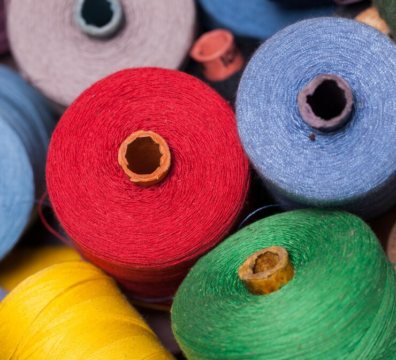
- Enhanced Inventory Management:
Mismanaged inventory can lead to increased expenditure in the textile business. ERP in textiles solves this problem by providing real-time visibility into inventory levels. As a result, manufacturers can maintain optimal stock levels and reduce inventory carrying costs by 2-3%.
That’s not all! ERP offers accurate demand forecasts and helps users monitor stock movements. This helps business owners avoid stockouts and overstocking, further ensuring that necessary materials are available when needed without tying up capital in excess inventory.
- Streamlined Production Planning:
This is perhaps the most crucial aspect of any textile manufacturing unit. Missed deadlines or poor-quality production can lead to monetary losses. But with ERP software, textile manufacturers can manage complex production schedules and ensure meeting tight deadlines.
ERP systems increase textile manufacturing profitability by facilitating detailed production planning. These systems integrate data from various departments, enabling manufacturers to allocate resources efficiently, minimize downtime, and ultimately optimize schedules. This leads to increased productivity by up to 20-30% and reduced labor costs.


- Improved Quality Control:
Imagine completing a production order and then realizing it doesn’t meet the customer requirements or there are some unseen defects. It would lead to huge waste of money, resources, labor, and so much more.
ERP in textiles enables business owners to establish strict quality control measures during the production process. They can monitor quality metrics at every step of the way and ensure compliance with industry standards. ERP also helps with early identification of any defects, allowing manufacturers to address them promptly. This results in reduced waste, enhanced customer satisfaction, and decreased chances of costly mishaps.
- Better Resource Allocation:
Profitability in a textile business significantly depends upon optimum utilization of resources. With the help of textile ERP software, manufacturers can access real-time insights into resource utilization. Using this data from the ERP, you can allocate labor, machinery, materials more efficiently as per your production requirements.
The result? You can minimize idle time, improve production efficiency, and lower operational costs.


- Real-Time Data and Analytics:
One of the most preferred textile ERP benefits is that these systems provide real-time data and analytics from all departments of the textile manufacturing unit. This helps manufacturers track and monitor every aspect of their business – starting from raw material procurement to invoice settlements.
Additionally, business owners can consistently monitor key performance indicators, analyze market trends, identify areas of improvement, optimize processes, and so much more from one platform. This allows them to take data driven decisions and ultimately boost profitability.
- Supply Chain Optimization:
A successful textile business depends upon a healthy supply chain. ERP in textiles integrates all aspects of textile manufacturing and enhances supply chain visibility and collaboration.
Consequently, manufacturers can coordinate better with suppliers and distributors, ensuring timely procurement of raw materials and delivery of finished goods. Improved supply chain management reduces lead times, lowers transportation costs, and enhances overall efficiency.


- Reduced Operational Costs:
A smooth-running textile unit consists of several tasks that are time-consuming and need to be done on a daily basis. This increases dependence on manual labor, leaves scope for rising human errors, and ultimately leads to increased operational costs.
With the help of ERP in textiles, manufacturers can automate these repetitive tasks and streamline workflows. Automation leads to reduced dependency on manual intervention and speeds up processing times and lowers labor costs. Additionally, textile ERP software can identify cost-saving opportunities, such as bulk purchasing or efficient use of materials, contributing to overall cost reduction.
In conclusion, implementing ERP in textiles is a game-changer for manufacturers looking to boost profitability and efficiency. With features like enhanced inventory management, streamlined production planning, and improved quality control, textile ERP software offers substantial ROI by reducing operational costs and optimizing resource allocation.
By leveraging real-time data and analytics, manufacturers can make informed decisions, ensuring high-quality standards and customer satisfaction. Investing in ERP systems tailored for the textile industry is not just a strategic move but a necessity in today’s competitive market.
Contact Us


